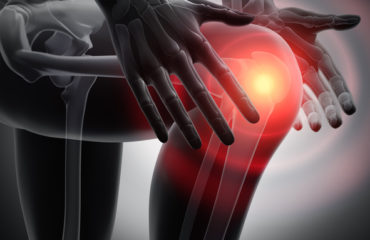Arthritis is an affliction that affects millions of people around the world, with over 28 million in the U.S. alone. Generally speaking, the term applies specifically to the inflammation of the joints. However, in today’s nomenclature, the word arthritis is applied to a wide spectrum of rheumatic maladies dealing with joints. Nevertheless, the pain and decreased range of movement that accompanies the disease is one that presents quality of life issues for those that suffer from it. There are a number of conditions that contribute to the onset of arthritis, which are classified into two classes, those that can be modified and those that cannot. By having an understanding ![]()
![]() of the risk factors involved, especially those that are modifiable, you increase your chances of being able to successfully stave off the affects of this condition.
of the risk factors involved, especially those that are modifiable, you increase your chances of being able to successfully stave off the affects of this condition.
The risk factors that cannot be modified are those in which there is no way to exclude oneself from the particular risk group.
Age
The onset of arthritis increases proportionally as individuals advance in age.
Gender
Women are more likely to develop arthritic conditions than men. While gout is a malady more common in men, nearly 60% of those afflicted with arthritis are women.
Genetics
Research shows that some types of arthritic conditions are passed down genetically. Such conditions as Systemic Lupus Erythematous (SLE) and Rheumatoid Arthritis (RA) are just two examples of those that are attributed to having certain genes.
Then there are those risk factors that can be modified. These factors can increase one’s chances of developing arthritis conditions if they are present, but can be minimized by active prevention.
Joint Injuries
Injuries to joints such as knees, shoulders and hands can significantly increase the chance of developing osteoarthritis in the near or far term. Being proactive by taking preventive measures to avoid joint injury is imperative, especially for those who are physically active in sports and/or pursue health lifestyles with fitness regimens.
Excessive Weight
Being overweight contributes directly to knee issues and the possible onset of osteoarthritis. Excessive weight increases the pressure on knee use for even simple tasks such as walking. Losing weight, therefore, is a health and physiological necessity in order to maintain a desirable disposition.
Repetitive Movements
Some occupations and situations may require repetitive movements like squatting or knee bending, for example. This constant stress on the knee joint can also cause the development of osteoarthritis. Excessive and repetitive movements over sustained periods should be avoided.
The purpose of identifying risk factors is to educate individuals about the dangers that are associated with many of  the activities and situations people are confronted with. In the case of arthritis, the condition presents a physically limiting and undesirable state of being that in some cases could have been minimized or completely prevented. Take some time to speak with an orthopedic doctor Phoenix to learn more about what you can do to reduce your risk factors and safeguard your health.
the activities and situations people are confronted with. In the case of arthritis, the condition presents a physically limiting and undesirable state of being that in some cases could have been minimized or completely prevented. Take some time to speak with an orthopedic doctor Phoenix to learn more about what you can do to reduce your risk factors and safeguard your health.


